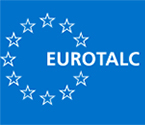Talc in paper

Reduces the consumption of water and the release of waste water.
Talc adsorbs organic impurities (pitch, anions) in the water and helps to reduce the amount of additional fresh water required in the paper making process. As a result mills are able operate in closed water circuits, which reduces waste water output. As opposed to chemicals used for cleaning, talc is a natural additive which ends up as a filler in the final paper product, thereby avoiding the creation of another waste stream.
Talc in plastics

Allows the development of environmentally preferable plastics.
Various types of plastics are increasingly being replaced by easily recyclable talc-reinforced polypropylene (PP). Talc improves the rigidity of PP, enabling down-gauging of the end product. Talc-reinforced PP is used, for instance, in automotive applications enabling overall vehicle weight to be reduced, leading to fuel savings. Furthermore, talc-reinforced PP oxidises or decomposes giving off water and CO2, with the only residue being environmentally safe and inert talc.
Talc in ceramics
Contributes to a new generation of ceramics.
Automotive catalyst exhausts and diesel engine filters help to reduce toxic emissions. These use ceramic supports containing over 30% talc, which provide thermal shock resistance.
In sanitaryware, talc helps reduce the amount of potentially dangerous substances, such as toxic heavy metals, in the formulation of glazes.
Using talc in kiln rollers has also contributed to the development of new roller kiln technology with subsequent energy savings and associated reduction in greenhouse gas emissions.
Talc in agriculture
Improves flowability of phytosanitary products and brings energy savings.
Talc coats fertiliser pellets more efficiently, resulting in savings in hydrocarbon used as an adherent. As it requires less hydrocarbon content, talc-coated fertiliser has less environmental impact and is less odorous. It is therefore safer for the health of production workers.
In animal feeds, talc addition improves fluidity. This results in less bacteria build-up in the circuits and fewer production halts, bringing energy savings, as well as making the operator’s job safer.
Talc in rubber
Contributes to better rubber performance.
Talc helps make automotive hoses less permeable, thus lowering hydrocarbon evaporation rates and diminishing toxic emissions and fuel smell. Talc powdering facilitates tyre demoulding cycles, reducing energy needs.
Talc in wastewater treatment
Improves the performance of activated sludge wastewater units.
Talc-based products improve the performance of activated sludge wastewater treatment plants (where bacteria are used to degrade waste). The talc particles ballast the flocs of bacteria, thereby improving their sedimentation and effluent clarification. This results in top quality effluent and zero bacterial loss. In this way, plants can be upgraded without resorting to costly plant expansions. As opposed to most chemicals used to clean wastewater, talc is a natural, environmentally inert mineral additive that does not impair the fertilising value of the sludge.
Talc in putties
Allows the solvent content to be reduced.
Polyester putties normally use between 13% and 15% styrene to reduce viscosity. The addition of low oil-absorption talc enables formulators to reduce styrene content so as to comply with European standards, while maintaining the viscosity at the appropriate level.
Talc in coatings

Contributes to paint durability and reduction in VOC content.
Due to its inertness, talc improves adhesion and anticorrosion, increasing the paint’s durability. Because of its low viscosity properties, talc helps coatings manufacturers to formulate low volatile organic compound (VOC) paints, thereby reducing the quantity applied and solvent emissions. This benefits the environment and the health of users.





